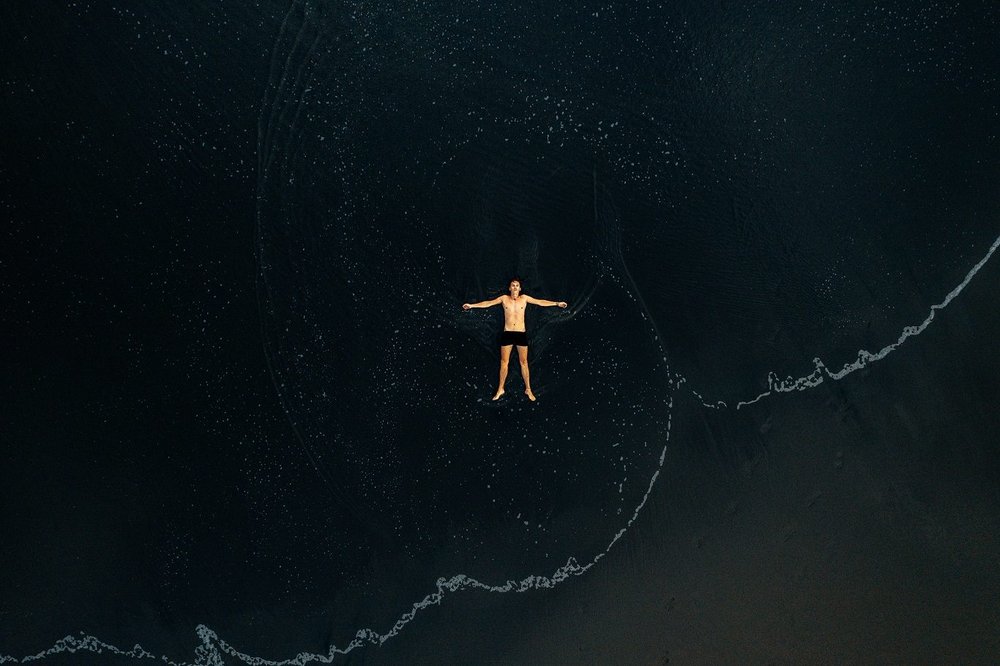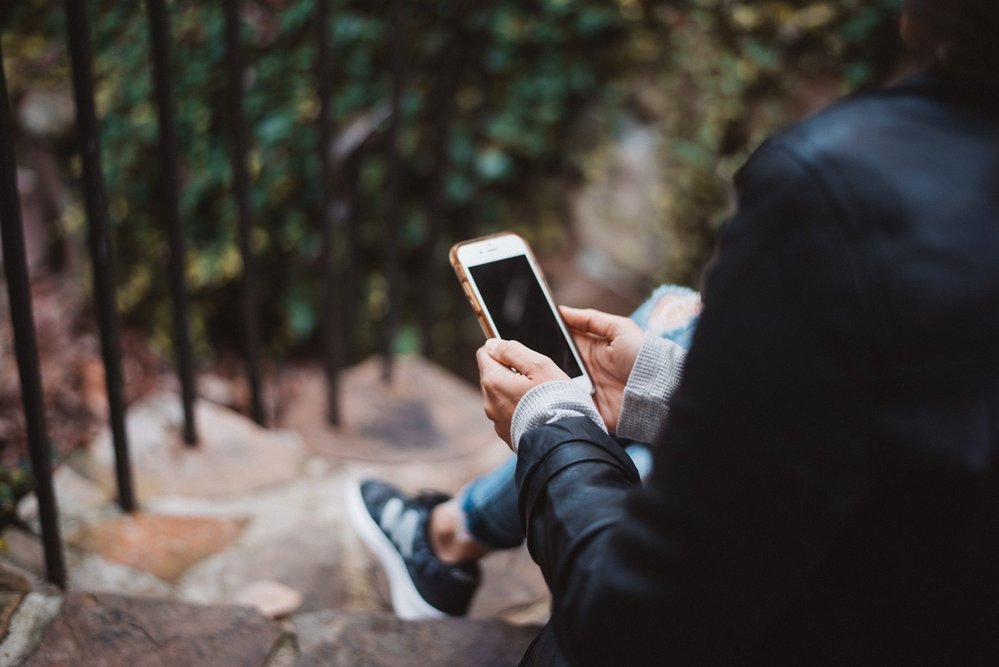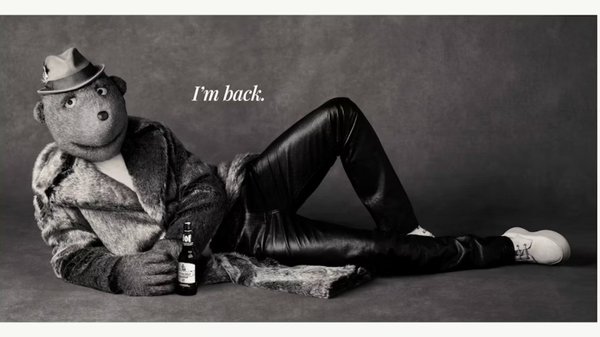Why the pandemic has sent creativity into free fall /
Martin Lindstrom explains why pandemic working practices are killing creativity
Contagious Contributor
/
Photo by Jaanus Jagomägi on Unsplash
At 11 pm, I found myself staring at a Word document on the screen. It was only five words long. Over the last 19 days, I’d massaged, changed, and rewritten those five words hundreds of times. Not enough words, for sure, to impress my editor.
INC wrote recently that creativity is thriving in these times of Covid-19. In contrast, I think exactly the opposite. Creativity is collapsing in this coronavirus-beset world.
This first dawned on me when I spoke with a friend of mine, the global chief marketing officer of Burger King, Fernando Machado, known for the Andy Warhol primetime Super Bowl commercial, the KFG campaign, and the ‘Moldy Whopper’. He told me that nearly everyone he knows in the creative field is at a breaking point. Most members of creative teams, he told me, see psychologists on a regular basis. They’re simply losing their creativity.
In a time when travel is a memory, long-winded meetings at the office have disappeared, and we have more time than ever at home, why is creativity taking a plunge?

Photo by Ryan Wallace on Unsplash
Nearly three decades ago, while working with Lego, I conducted a highly unusual experiment, not only to understand creativity, but also to understand how those ‘new things’ (Donkey Kong handheld gaming devices) were impacting kids’ creativity. Lego’s destiny was in play, so to speak, as they witnessed their sales being squeezed by this new global craze. Just a couple of years earlier I had conducted an experiment only to witness, two years later, something astonishing and horrifying. Kids had lost the ability to twirl a pen without dropping it. Simple motor skills were disappearing. And, as kids’ play moved from the playground to the screen, creativity had drained from pre-teens’ brains.
As time went by, working with creative teams across the world, I noticed that in certain situations creativity actually seemed to thrive on-screen. But in other situations, it seemed like someone had pressed a writer’s block button.
Thoroughly intrigued, I began mapping my own creativity levels, the good days along with the bad. It turned out that my most creative moments didn’t happen while I was sitting down at a desk, and certainly not while I was staring into a screen. They occurred in a weightless environment, where the effects of gravity were negligible – in the pool. Transferring this observation into the real world wasn’t a straightforward task, of course. For one thing, how was I supposed to take notes while swimming laps? How could I ignore the perplexed stares of my fellow swimmers? But I did discover that I was able to solve challenging problems in the water, draft that difficult-to-phrase letter, and brainstorm baffling concepts. I could tackle these challenges on dry land, but I’m sure I wouldn’t bring the same level of creative elegance to them. I discovered I wasn’t alone in this. When I shared my ‘water moment’ insight with other creative types over a late-night drink, they shared with me, half-disbelieving and half-wondering, that they’d come to exactly the same self-realisation.

Photo by Joe Ciciarelli on Unsplash
As my thinking evolved, so did my obsession with rescuing my creative mind. I learned that certain types of screen-based interactions not only killed creativity in an instant, but also had a prolonged negative impact for hours after I’d switched off the screen. As I plotted out my lows and highs, a consistent pattern emerged. It surprised me, to say the least. The ultimate creativity killer? My phone.
Most people would argue that the phone has become an essential tool of survival. It’s an extended hand, occupying our thoughts and putting our brains on overdrive – even while sometimes paralysing our minds. I wondered: Could that tool, containing the answer to every imaginable question, offering every source of inspiration, really represent the death of creativity?
On January 1st 2017, I switched off my phone, as a one-man-experiment into the phone’s impact on creativity. I meant the experiment to last for just one year. Along the way, I gained some profound insight (and, almost nearly four years later, I still haven’t turned my phone back on).
I started seeing things in ways I’d never done before, I re-discovered the joys of silence, and I began meeting new people. In those old days, whenever I found myself at a loose end, I pulled out my phone and did something – anything at all – in order to avoid strangers thinking I’m the sort of lonely loser who’s been stood up by a date or business associate.
However, the biggest surprise to me wasn’t what I began to see, but what I began to feel. In the old phone-infused days, I would fill every silent moment with ‘productive screen time.’ This was the case on the way to the airport, waiting in the airport lounge, while meeting with clients, at dinner, in the bathroom. The last thing I did before turning off the light at bedtime was to switch off my phone, and first thing in the morning, I’d switch it on again. If I had a spare minute, I justified the pause by hammering off quick, machine-gun instructions to my PA, flicking through hundreds of emails, responding to my staff’s 500-word-long, carefully crafted emails with five-word replies.
I was on a roll, for sure. By the end of these jackhammer sessions, my squeaky clean inbox would leave me with me a sense of relief and contribution. And then I’d repeat the process, as all 250 people replied to my replies. Without being aware of it, I kept going back to the future, in the best Groundhog Day style. Common sense, for sure, didn’t prevail.
Only after turning off my phone for a year did I realise I was never bored.

Photo by Chad Madden on Unsplash
As months went by without my phone, boredom returned — and with it, time for reflection.
It wasn’t easy. Sometimes I suffered withdrawal, like an addict in search of his fix. But with nothing to do — just silence — I found myself combining thoughts in new, unusual, unexpected ways. I spotted details I’d never noticed before. I vacuumed inspiration out of my everyday observations in ways unimaginable when YouTube served as my legal smoking break, tempting me the moment boredom threatened. Did I need a quick fix of self-assurance? LinkedIn lent me a helping hand, while squashing the faintest hint of boredom.
What I began to realise was that boredom, in fact, is the foundation for creativity. I hadn’t allowed myself a moment’s boredom for decades. Now I endured boredom – and I was more creative than ever.
Recently, as screens replaced face-to-face meetings, the semi-obligatory Friday afternoon beer has morphed into a digital phenomenon. The stroll to the meeting room, the watercooler chat, those casual conversations in the canteen over lunch — moments that management considers ‘lost hours’ that finance tries desperately (and unsuccessfully, I might add) to capture on timesheets – all those moments have disappeared. One by one, they’ve been converted into a never-ending stream of back-to-back Zoom calls. Something unusual has happened. Productivity has soared. Some measures value increased productivity at billions, if not trillions, of dollars. And, simultaneously, creativity has collapsed.
Martin Lindstrom, Lindstrom Company
If you pause for more than a few seconds on a call, someone out there in the dark is sure to say, ‘Martin, your mic must be muted.’ Those silent moments of reflection have vanished.
Forget about breaks, even to use the toilet. We’ve become expert at pretending we’re still on the call while doing our business. After all, who would dare reveal needing to go in front of 23 stamp-sized faces (though you can bet they’re all harboring the same secret desire to hit the loo)?
And aren’t we all pretending to be giving this meeting our absolute full attention, despite simultaneously hammering away on a PowerPoint presentation for the Zoom call that’s scheduled to kick off 20 minutes from now.
One recent day, after ten exhausting hours, I collected my notes from their 11 open Word files, the results of the day’s 11 Zoom calls, and threw myself on the couch, only to realize that my genuine, productive work, actually thinking and reflecting, was only now beginning – at 8 p.m.
It was then, in front of a blank Word document, that I recalled the feeling I had more than three years ago when I put my phone on the shelf. Those mini-breaks, those thoughtful pauses, those deep breaths had all but vanished. I was still physically present, of course, locked in front of my screen, but it wasn’t really me. It was the robotic, autopilot Martin saying ‘Yeah, I agree with Ivonne.’ I’d become the ‘Send me your deck, Dick,’ the ‘You’re on mute, Mike,’ the ‘I have to jump off for another Zoom’ Martin.
We’ve been seduced into thinking that translating our physical life to a digital lifestyle is a linear process. Not so. Those officially unproductive pauses, those stimulating thoughts, those creative connections, those moments benefiting from a carefully created company culture – all have been lost in translation. Yes, sure: a few industries, like the electronic dance music industry, are indeed thriving. One of the leading DJ’s, Martin Garrex, recently said, ‘We’ve never been more creative than now.’ His explanation? This creative tidal wave stems from the fact that they aren’t on the road with no time to think and reflect. The draining concert tours, the jetlag, and the endless late hours have been replaced by a ‘normal lifestyle,’ spiced up with frequent visits to their home studios. Connecting with fellow DJ’s around the world, they can ideate and compose remotely. But remember, these industries are built on creativity. Their fuel is sound, not back-to-back Zoom meetings, PowerPoint presentations, and Excel files.
Recently I began skipping every second Zoom call. I shut down my PC after half a day in front of the screen, blocked my calendar, and allowed myself to think. I reintroduced thinking time on dry land as well as in the pool. I reduced those 60-minute-long Zoom calls to 50 minutes each, reserving those 10 minutes for a natural break. Once I leave my office, I avoid the screen.
The article you’re reading right now is the one that began with those five lonely words on the screen – those five words I’d been struggling with for 19 days. When I began to take time away from my screen, the words came back to me.
I’ll let you in on a secret that may surprise you. I’m still alive.
Cutting down on it all didn’t cause me to drop dead on the floor. No one noticed that I was less accessible. No one commented that my stamp-sized photo was missing from the mouse trap of calls. What they did notice was that the Martin they once knew for his creativity had surprisingly returned. No one knew why … and no one bothered to ask, as they were all too busy jumping on their next Zoom.
Martin Lindstrom is the author of several New York Times bestselling books that have sold millions of copies and been translated into 60 languages. TIME magazine recognised him as one of the world’s most influential people, and in 2020 Thinkers50 named him the #18 management thinker in the world. Lindstrom’s latest book, The Ministry of Common Sense: How to eliminate bureaucratic red tape, bad excuses, and corporate BS, is due out on January 21, 2021.
For more, visit: MartinLindstrom.com/CommonSense
Want more of the same? /
We don’t just write about best-in-class campaigns, interviews and trends. Our Members also receive access to briefings, online training, webinars, live events and much more.







